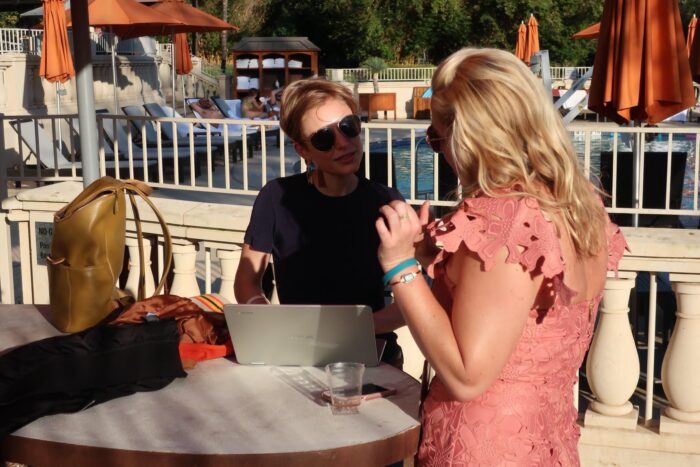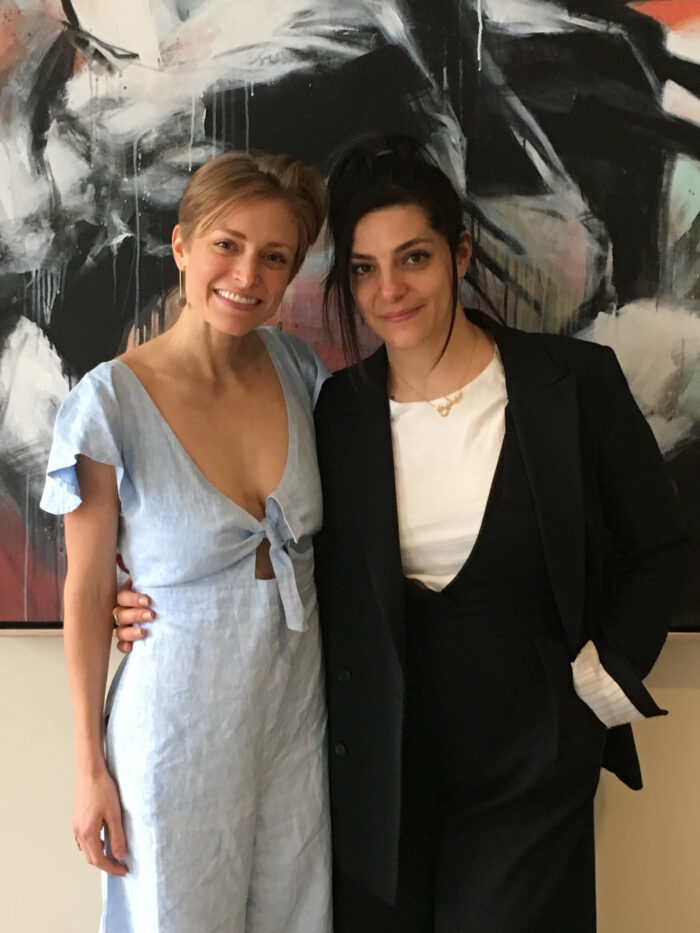Beyond Music & Tech: SXSW Considers Issues in Fashion Part II
By Kasi Martin
A couple weeks ago, I wrote about the fashion coverage at this year’s South by Southwest conference. Ethics and sustainability were in profile more than ever and circularity was the unifying theme, but heritage craftsmanship was not forgotten with the advancement of new technologies.
Lanvy Nguyen, the owner of indie brand Fashion for Freedom, told me why artisan craftsmanship is an integral part of circularity, even as tech advances. This week, I take a deeper dive into the themes defining these new tech advances. All overheard at SXSW® Style.
Synthetic Biology
In my personal research and writing, I’ve been a vocal advocate against the idea that that ‘natural is always better’ in sustainable fashion. Pragmatic solutions for a modern world call for a dual approach that combines natural solutions with new technology. I think it’s possible and Amanda Parks knows so. She pointed to the dye industry to illustrate during Sustainability and Ethics in Fashion Technology.
“We’ve got petrol-based dyes, which folks already know are bad, and then we’ve got natural dyes. These are better but they’re still an agricultural product, which takes up land and waste and competes with food production.”
Instead, she says ‘synthetic biology’ is poised to make dyeing more responsible. Amanda heads up innovation at Future Tech Lab — part investment company, part lab, part accelerator — where exciting ideas from small and big businesses come across her desk.
“There’s technology now that takes naturally occurring pigments, splices the DNA and color-fixes it so the dye becomes more vibrant and last longer. That’s an example of a synthetic that’s better.”
She reiterated, however, that once these new dyes become available, brands will still have to break down the consumer misconception that synthetics are bad.

Neo Fast Fashion
Looking ahead more, Amanda is set on the idea of finding solutions that will create ‘snapchat fashion.’ Ephemeral styles, she says, that will biodegrade as soon as consumers tire of them.
In my eyes, a solution like this could be a win-win. Consumers could indulge in trends and frequent wardrobe changes without worrying about harming people or the planet.
“I really want to do more with chitosan!” Amanda chimed. “It’s scraps from the seafood industry, mainly shell waste and it’s totally sustainable. The way to recycle it is to throw it back into the ocean. You can’t get more circular than that.”
Celine Semaan, the woman behind Slow Factory, echoed this idea on her panel, Beyond Fashion Tech.
“I want my kid’s shoes to be biodegradable!” she said. “We have to buy them so frequently anyway, so here’s a better idea: kids wear them out as they play and then we plant a tree with them instead of sending them to a third world country where they may not be needed, or worse, where they may put artisans out of business.”
Despite this, Celine cautioned that we don’t live in a circular economy just yet. The idea is still developing through conversation, research and investment. So, in her viewpoint, the solution for today is what she calls ‘fashion activism’ [she coined this term!].

To support this, she’s launching The Library Sustainable Standard, a sister company to Slow Factory that will help certify products and trace their full lifecycle so consumers and brands can have easier access to information about their clothes.
“Educate yourself as best as possible about who is making your clothes. Be a troublemaker and challenge the system,” she encouraged the audience, many of whom were aspiring designers “Through communication and culture, we can create change.”
Smarter Fibers
Melanie DeSalvo also spoke about working within the current system on the Sustainability and Ethics in Fashion Technology panel. She stands by slow fashion as one critical way to maintain ethics in the industry and has done so with her line, Virtue+Vice.
“Sometimes the super high tech solutions don’t work at scale,” she said. “Especially when smaller, artisan brands can’t afford them but are still putting in the work to adhere to the highest standards.”
Instead, Melanie is more encouraged by lower-cost ideas that artisans can integrate readily into their existing processes. A switch to alternative fibers, many of which are plant-derived and growing in popularity, is one example.
“I really love banana silk. It’s is not like other materials that require chemicals to become soft. It’s a lovely fiber on its own. It breathes like cotton and drapes like silk,” she said.
And using these ‘smarter fibers’ isn’t limited to artisan brands. Amanda mentioned Ferragamo’s noteworthy collection made with Orange Fiber, which was the first of its kind to make use of a citrus fruit by-product.
Both sound so a-peel-ing, right?
__________________________________________________________________________
To attend SxSW next year visit www.sxsw.com
If you want to see the sessions I attended and our meetup go to these links:
Sustainability and Ethics in Fashion Technology
Beyond Fashion Tech
Ethics in the Luxury Market: The Human Element
Manufacturing for a Better Tomorrow Meet Up (speaker)
Kasi is a fashion writer, stylist, speaker, and model. She founded The Peahen where she covers ethical fashion for the mainstream consumer. She’s a fierce advocate for conscious brands, sustainable manufacturing practices, and transparency. She co-organizes Fashion Revolution Week in Austin, Texas. Find her on Instagram.





